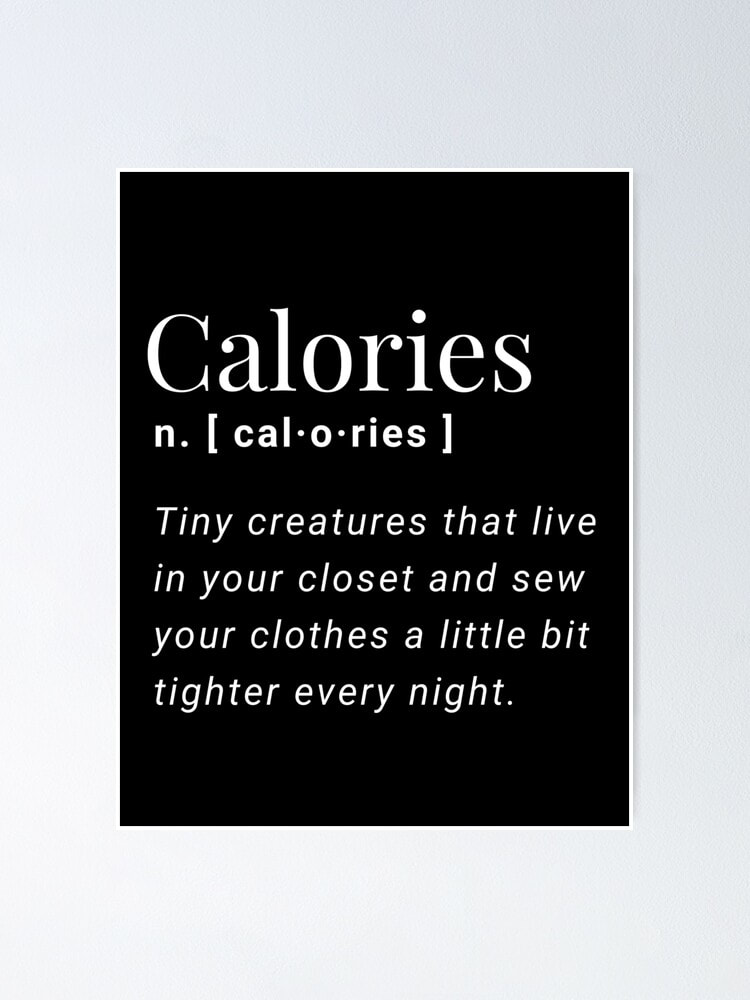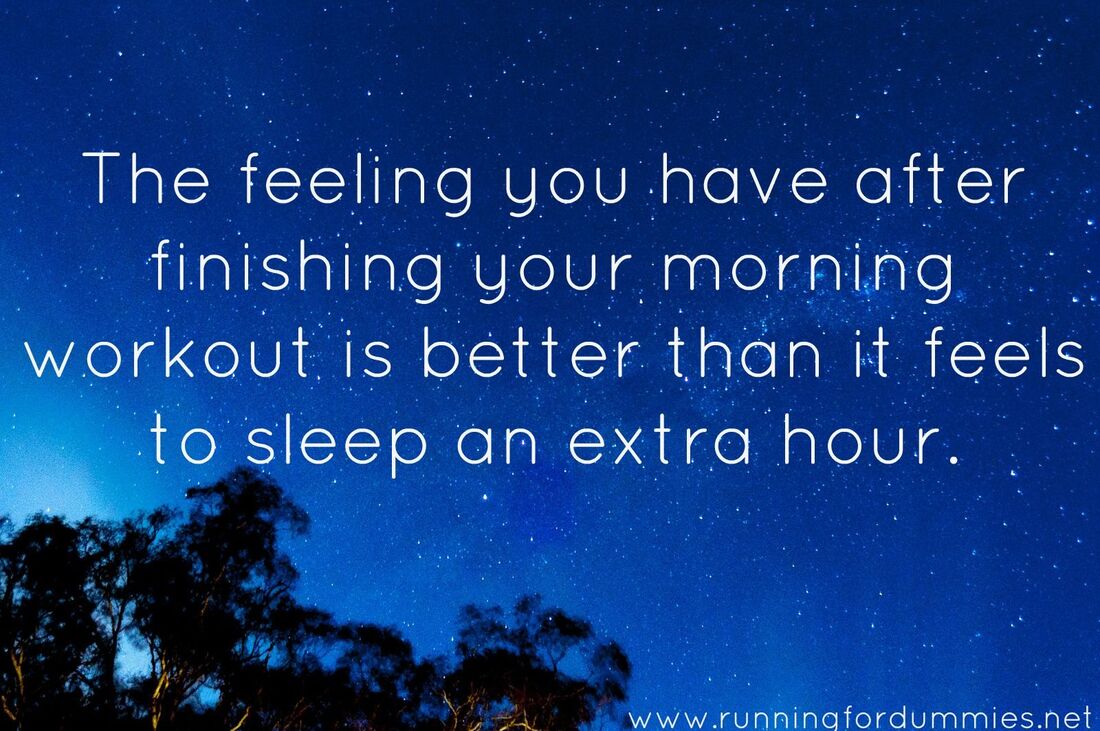 CLICK HERE FOR BMR CALCULATOR The basal metabolic rate (BMR) is the amount of energy needed while resting in a temperate environment when the digestive system is inactive. It is the equivalent of figuring out how much gas an idle car consumes while parked. In such a state, energy will be used only to maintain vital organs, which include the heart, brain, kidneys, nervous system, intestines, liver, lungs, sex organs, muscles, and skin. For most people, upwards of ~70% of total energy (calories) burned each day is due to upkeep. Physical activity makes up ~20% of expenditure and ~10% is used for the digestion of food, also known as thermogenesis. The BMR is measured under very restrictive circumstances while awake. An accurate BMR measurement requires that a person's sympathetic nervous system is inactive, which means the person must be completely rested. Basal metabolism is usually the largest component of a person's total caloric needs. The daily caloric need is the BMR value multiplied by a factor with a value between 1.2 and 1.9, depending on activity level. In most situations, the BMR is estimated with equations summarized from statistical data. The Harris-Benedict Equation was one of the earliest equations introduced. It was revised in 1984 to be more accurate and was used up until 1990, when the Mifflin-St Jeor Equation was introduced. The Mifflin-St Jeor Equation has been shown to be more accurate than the revised Harris-Benedict Equation. The Katch-McArdle Formula is slightly different in that it calculates resting daily energy expenditure (RDEE), which takes lean body mass into account, something that neither the Mifflin-St Jeor nor the Harris-Benedict Equation does. Of these equations, the Mifflin-St Jeor Equation is considered the most accurate equation for calculating BMR with the exception that the Katch-McArdle Formula can be more accurate for people who are leaner and know their body fat percentage. You can pick the equation to be used in the calculation by expanding the settings. The three equations used by the calculator are listed below: Mifflin-St Jeor Equation: For men: BMR = 10W + 6.25H - 5A + 5 For women: BMR = 10W + 6.25H - 5A - 161 Revised Harris-Benedict Equation: For men: BMR = 13.397W + 4.799H - 5.677A + 88.362 For women: BMR = 9.247W + 3.098H - 4.330A + 447.593 Katch-McArdle Formula: BMR = 370 + 21.6(1 - F)W where: W is body weight in kg H is body height in cm A is age F is body fat in percentage BMR Variables Muscle Mass – Aerobic exercises, such as running or cycling, have no effect on BMR. However, anaerobic exercises, such as weight-lifting, indirectly lead to a higher BMR because they build muscle mass, increasing resting energy consumption. The more muscle mass in the physical composition of an individual, the higher the BMR required to sustain their body at a certain level. Age – The more elderly and limber an individual, the lower their BMR, or the lower the minimum caloric intake required to sustain the functioning of their organs at a certain level. Genetics – Hereditary traits passed down from ancestors influence BMR. Weather – Cold environments raise BMR because of the energy required to create a homeostatic body temperature. Likewise, too much external heat can raise BMR as the body expends energy to cool off internal organs. BMR increases approximately 7% for every increase of 1.36 degrees Fahrenheit in the body's internal temperature. Diet – Small, routinely dispersed meals increase BMR. On the other hand, starvation can reduce BMR by as much as 30%. Similar to a phone that goes into power-saving mode during the last 5% of its battery, a human body will make sacrifices such as energy levels, moods, upkeep of bodily physique, and brain functions in order to more efficiently utilize what little caloric energy is being used to sustain it. Pregnancy – Ensuring the livelihood of a separate fetus internally increases BMR. This is why pregnant women tend to eat more than usual. Also, menopause can increase or decrease BMR depending on hormonal changes. Supplements – Certain supplements or drugs raise BMR, mostly to fuel weight loss. Caffeine is a common one. BMR TestsOnline BMR tests with rigid formulas are not the most accurate method of determining an individual's BMR. It is better to consult a certified specialist or measure BMR through a calorimetry device. These handheld devices are available in many health and fitness clubs, doctor offices, and weight-loss clinics. Resting Metabolic RateWhile the two are used interchangeably, there is a key difference in their definitions. Resting metabolic rate, or RMR for short, is the rate at which the body burns energy in a relaxed, but not fully inactive state. It is also sometimes defined as resting energy expenditure, or REE. BMR measurements must meet total physiological equilibrium while RMR conditions of measurement can be altered and defined by contextual limitations. Modern WisdomA 2005 meta-analysis study on BMR* showed that when controlling all factors of metabolic rate, there is still a 26% unknown variance between people. Essentially, an average person eating an average diet will likely have expected BMR values, but there are factors that are still not understood that determines BMR precisely. Therefore, all BMR calculations, even using the most precise methods through specialists, will not be perfectly accurate in their measurements. Not all human bodily functions are well understood just yet, so calculating total daily energy expenditure (TDEE) derived from BMR estimates are just that, estimates. When working towards any sort of health or fitness goal, BMR can aid in laying down the foundations, but from there on, it has little else to offer. A calculated BMR and thus TDEE may result in unsatisfactory results because of their rough estimates, but maintaining a daily journal of exercise, food consumption, etc., can help track the factors that lead to any given results and help determine what works, as well as what needs to be improved upon. Tracking progress in said journal and making adjustments over time as needed is generally the best indication of progress towards reaching personal goals. CLICK HERE FOR BMR CALCULATOR
0 Comments
 Sometimes we are too busy to squeeze in a full workout but do short 7-minute and 10-minute workouts really work? Read on to learn more! Will only a couple of minutes of exercise be worth it? Here’s what you should know:
BENEFITS OF QUICK WORKOUTS What benefits can you get from very short workouts?
Can you do high intensity exercise if you are overweight? Yes, stationary cycling and walking (especially uphill) can be done at a high intensity even if you are overweight and have a low fitness level. Jogging is an option, too, but remember to increase the distance slowly. A combination of walking and jogging is a good start.
Keep in mind: The studies that show evidence of benefits from short workouts include high intensity, “all-out” exercises, such as sprints, done over a course of 8+ weeks. What does this mean for you? When opting for a short workout, aim to keep the intensity high, at about 8 in a range of 1 to 10 level of discomfort. Is a short workout better than no workout? Clearly, the answer is yes! Quick, short workouts are great when you travel, have only 10 minutes for a workout before you have to take a shower, or just want to gain more focus throughout the day. However, if your goal is something other than being more focused and improving your health, keep reading... SHORT WORKOUTS: GOALS & EXPECTATIONS Despite what the media wants you to believe, there is no shortcut to success. Quick workouts can be a great tool to use on your road to success. But they shouldn’t be your only choice if you want to achieve a specific goal. If your goal is to…
WHAT RESULTS CAN YOU EXPECT IF YOU DO A 10-MINUTE WORKOUT EVERY DAY? If you live a sedentary lifestyle and are out of shape, you can improve your general fitness with 10-minute workouts. Focus on short bouts of vigorous exercise (over 90% of your HRmax) and stay consistent for at least a month. 3-5 times a week is enough. For achieving specific fitness goals, it’s still better to have a training plan, such as this 12-week bodyweight training plan that you can do at home. Speaking of a quick workout...Next time a commercial break is on TV, you could test yourself to see how many of these Burpee variations you can do with good form without stopping. ;)  Hidden calories: They can add up fast! Think of them as "stealth" calories. Like the military plane that's able to avoid radar, extra calories can sneak into your diet despite your best efforts to make good choices. Hidden calories can masquerade in food that seems healthful but is filled with fat. Or, they might be in a food you didn't know packed a high caloric punch. And if you are trying to lose weight, then you may be shocked to hear that even foods we consider healthy can be high in calories, leading to weight gain. No matter where extra calories come from, they add up fast. But knowing what foods contain hidden calories can help you stay on track in maintaining a healthful diet. Tracking hidden calories Foods that may give more calories than you bargained for include: Reduced-fat foods: Just because some of the fat is gone doesn't mean the calories are. If you check the label, you'll often find that the reduced-fat snack you're eating still has a significant number of calories — sometimes almost as much as"regular" snacks. Tip: Pay attention to the label, especially the serving size and total calorie content, and you won't wind up with more calories than you intended. Condiments: A tablespoon of mayonnaise adds 100 calories to your sandwich with one spread of your knife. One tablespoon of salad dressing is another quick way to put up to 100 calories in your salad. And just 1 tablespoon of butter tops your baked potato with another 100 calories. Think of the other things you typically add to your food without much thought. Do you like jelly on your toast? One tablespoon even of the all-fruit spreads has about 50 calories. Do you add cream and sugar to coffee? You could be adding up to 65 calories to your morning java. Honey, often added to tea, has 65 calories per tablespoon. Tip: To add spice to food without adding as many calories, try ketchup, salsa or one of the many new gourmet mustards. For coffee or tea, use skim milk or a sugar substitute (in moderation) instead. Many flavored coffees or teas are also low in calories, and they don't need cream or sugar. Alcohol: Cocktail calories add up fast. A Pina Colada has 644 calories. A Margarita 700. Tip: Try light beer (100 calories) or nonalcoholic beer (60 calories). Or, make your own wine spritzer by adding club soda to half a glass of wine.A 2.5-ounce martini has about 155 calories, while a 2-ounce Manhattan has 130 calories. Soda pop: Because of the sugar in it, regular soda has about 150 to 200 calories per 12-ounce can. If you drink three cans a day, which is the amount contained in many of the large refillable cups sold by stores and restaurants, you've used up a good share of your recommended daily intake of calories. Tip: Try making water your main beverage. But if you still want something fizzy, try club soda or mineral water. Add a lemon or lime wedge for flavor with negligible calories. Nuts: Although they're a good source of protein and vitamin E, just a small handful of nuts can easily contain 100 to 200 calories. For example, there's about 160 calories and 14 grams of fat in those packages of peanuts handed out on airplanes. And just 1 ounce of sunflower seeds sprinkled on your salad adds 170 calories and about 15 grams of fat. Tip: Snack alternatives to nuts include air-popped popcorn (25 calories a cup) or pretzels (25 small ones have 110 calories). For crunch on top of salads, try cut-up celery, water chestnuts, radishes or carrots. Olive Oil: Olive oil is a healthy fat but it packs a high calorie punch. One level tablespoon has 119 calories, (making it calorically-dense) and those calories can easily add up if you are using olive oil as a salad dressing or to dip your bread in. Tip: Go easy on the oil and measure it out or use a reduced-fat salad dressing and measure it so you know how much you are getting. Yogurt: Many types of yogurt, including frozen yogurt, may be low in fat but high in sugar and calories. Check the label or ask at the counter to see how many calories you're getting. Tip: Look for fat-free yogurts. But be careful even they may have about 100 calories per serving. And keep the serving size reasonable. Have frozen yogurt in a small sugar cone (which has 45 calories) rather than a waffle cone that is 200 calories. Or skip the cone altogether and have the same amount in a dish. Muffins: They seem like a healthful food and they're often sold in so-called health food stores. But one large muffin can have between 300 and 500 calories, not to mention a good number of fat grams. Even a regular-size muffin can have 120 to 200 calories. Tip: Choose a bagel, English muffin or slice of hearty, whole-grain bread instead. Fruit juice: Think of how many oranges you have to squeeze for a glass of juice. Now you know why an 8-ounce serving of orange juice can have 100 to 120 calories, even though an orange has only about 60 calories. Other fruit juices. pineapple and grape in particular may also be high in calories. Tip: Keep your juice serving size to 6 ounces. Or, eat a piece of the fruit itself instead.  How kitchen scale can be beneficial for your health and kitchen: A kitchen scale is not only a tool for measuring your food quantity and tracking your weight but also a device for bakers, chefs, home cooks, and health-conscious individuals alike. We have EQUAL kitchen scales that will help you live your best, healthiest life, whether your requirements like watching your calories, needing precise flour measurements, or simply wanting to be more mindful of meal portion sizes. 1. The kitchen scale gives an accurate measurement of portion size Kitchen scales can be handy if you are trying to control portions in a healthy way. To ensure your servings are healthy, weigh out your chicken breast, broccoli, and blueberries with the help of a precise kitchen scale. You can also weigh all the things together. To ensure you are eating the correct portion size at each meal, place your snacks and sweet treats on your kitchen scale. By placing your chicken on a scale, you can ensure that it is consistent with the weight of a healthy serving of chicken. 2. Calculating real serving sizes and counting calories The nutrition label on a bag of fruit snacks may not provide you with the most accurate calorie count and serving size for a given snack but a kitchen scale can help you in accurate measurement. The label will usually show an approximate weight and the serving size information. Let’s suppose, a package of healthy snacks might say there are 200 calories in 50 grams (about 10 pieces) but when you actually calculate the weight it turns out 55 grams which is a huge difference from the actual one. 3. Eating healthier and possibly losing weight can be encouraged by weighing your food Yes, it’s possible to lose weight with the help of a kitchen scale. Regulating serving sizes and portion sizes is only the first step. Making sure to weigh your food intake is a healthy habit, as it enables you to be aware of what you put into your body (and how much!). Maintaining your diet and healthy regimen is easier with a food scale if you are trying to lose weight. It is even possible that you will eat more vegetables because it is easier to calculate the exact serving sizes of vegetables than potato chips. 4. Makes eating out more mindful As you become familiar with using a scale, you get an idea of what a healthy serving size looks like. You'll also be able to estimate how many calories certain foods contain. When you use your scale even when you're not home, you're training your brain to consume healthier foods! When you are out in a restaurant, you may make a better choice based on the knowledge you have about portion sizes. Additionally, you will be more conscious of your choices on the menu. 5. It makes your kitchen work much easier They are useful for complicated recipes that require precise measurements, such as those that call for flour or salt. In addition, kitchen scales offer more accurate results than measuring cups for volume measurements. Weighing an item in a recipe can even offer you greater accuracy than measuring it out with a cup, like chopping onions or bowling fusilli noodles. 6. Very easy to use You get an accurate weight result by simply placing your food on the scale and pressing a button. Our scales provide you with the option to toggle between the units within seconds by using their "unit" button. If there is more than one item on a plate to weigh, hit the tare button to start weighing the next item. 7. Convenient size These sleek kitchen scales are small and convenient, so you can place them anywhere you like! It takes up very little space, and they are small enough to fit into most cabinets and drawers. 8. Easy to clean and maintain Keeping our kitchen scales clean and maintained is easy, thanks to the tempered glass surface! When you are finished using it, wipe it down with a damp cloth. That means you don’t need extra time and products for cleaning purposes.  Chances are, you know what it’s like to stretch your stomach past its limit, perhaps without even realizing it. Maybe you’ve opened a supersized bag of chips and nibbled through the entire package. Or maybe you’ve caved in to your sweet tooth and eaten a whole pint of ice cream. The drawbacks of such accidental overeating are obvious. Most people overeat foods that are high in fat, sugar and salt, which can have negative effects on your health. Plus, over time, eating solely for enjoyment can override the body’s ability to recognize when we’re satisfied. It could also light up the addiction pathways in the brain and lead to even more overindulging. Put a Stop to Overeating Many factors converge to drive us to the refrigerator. It’s not just because we’re hungry or lacking in a certain nutrient. Instead, it’s a combination of visual cues (seeing food either on TV or in real life), emotional needs and feelings, and social or normative cues (it’s noon so it must be time for lunch). Here are seven strategies to help you avoid accidental overindulging: 1) Create a supportive environment: Store fresh fruits and vegetables in plain sight. Keep a bowl of apples, pears and bananas on the counter or kitchen table. Stock green leafy vegetables, raw carrots, celery, bell peppers and other munchable produce in clear containers in the refrigerator. Put salty snacks and sweets in a high cabinet out of reach. Better yet, eliminate them from your house entirely. 2) Reduce distractions: Eating while you work, watch TV or fiddle with your smartphone increases your odds of overeating. When you’re distracted at meal time, you’re more likely to miss your body’s satiety cues — the messages your body sends that say, “Stop eating. I’m full.” 3) Keep good company: Eating with other people can help you eat less or lead you to eat more, depending on the situation. If you’re hitting happy hour with a buddy who likes to wolf down his food, chances are you’ll speed up your usual pace — and accidentally overeat. On the flip side, if you’re savoring a leisurely meal with a good friend and sharing a deep conversation, you may eat less. 4) Go slow: You should give yourself at least 20 to 30 minutes to eat a full meal. Any less than that and you may be eating too quickly for your body to realize it’s satisfied. To help yourself slow down, focus on your food and mindfully chew each bite. You can also play slow, soothing music in the background and put your utensils down after each bite. 5) Eat at a table: Instead of eating breakfast in your car, indulging in dessert in your favorite recliner and noshing on lunch working at your desk, make sure you eat every meal and snack sitting at a table where you can focus on enjoying your food. 6) Watch portion sizes: Unfortunately, portion sizes for standard meals and snacks — whether prepared at home or purchased on-the-go — have ballooned in recent decades. When you’re home, use 9-inch salad plates for meals instead of 11-inch entrée plates. When you’re dining out, ask your server to put half of your meal into a doggie bag so you can eat it the next day. 7) Keep healthy foods within reach: You’re more likely to eat what you see and can reach. Serve high-fat, high-calorie foods at the counter, but keep the vegetables and fruit on the kitchen table where they’re easy to reach. Support Yourself Even with these strategies, you’ll probably overeat from time to time. Don’t beat yourself up. It can be difficult to avoid food traps on a daily basis. Take note of what led you to overindulge and try to steer clear of the trigger next time. Still struggling to control your calorie intake? Consider scheduling a consultation with a registered dietitian to help you devise a plan that works for your unique circumstances.  There are several benefits of working out in the morning—here's how to shift your exercise schedule with a few simple strategies. Just as the best type of exercise is the one that you actually enjoy doing, ultimately, the best time to exercise—whether that's afternoon, evening, or morning—is whenever works best with your schedule and lifestyle. Because let's be honest, figuring out how to start working out is hard enough without having to rework your entire routine. That said, if you've been wondering if there's one time of day that's best for exercising, there are some undeniable pros of working out in the morning. The Benefits of Working Out in the Morning Surveys show that you're more likely to stick with a morning workout or exercise program than one later in the day, when you'll likely be distracted by other responsibilities or have time to come up with excuses to skip your fitness session. Research has also found that exercise can help improve mood and sense of well-being by increasing feel-good neurotransmitters like endorphins, epinephrine, norepinephrine, and dopamine. Physical activity also been shown to boost cognitive functioning like memory, attention, concentration, and learning. Needless to say, a sweat session is a great way to begin each day, especially before work or school when you want to be in top mental form. Morning workouts can also help you beat the heat of summer. And if you're participating in any type of fitness event, start times are almost always in the morning. If you want to compete at your optimal level, it's wise to get used to morning workouts. So how do you start working out in the morning without dreading it? Experts have their favorite tips for turning the morning into your preferred time of day to move. Read up and get ready to set your alarm for a few hours earlier than usual. 1. Get enough sleep This should be a no-brainer, but if you don't log the sleep you need, you're not going to feel like getting up in the morning, let alone tackling a morning workout. While you should shoot for seven to eight hours of sleep every night, making the switch overnight isn't easy. That's why Jonathan Jordan, a NASM certified personal trainer personal trainer and nutrition coach in San Francisco, tells his clients to add just 30 minutes at a time to their bedtime routine. So if you're usually in bed around 11 p.m., start making a conscious effort to get in bed at 10:30. "Even if you lie quietly in bed and do a little deep breathing or meditation until you fall asleep, it can help," he says. 2. Get good quality sleep It's not just the amount of sleep you get that matters—sleep quality is important too. One rule Jordan employs with his clients: Adopt a 30- to 60-minute device blackout period before bed. During this time, abandon your use of phones, computers, and light-emitting devices. "Clients who do this [tend to] sleep better, have more energy, and report less stress, better diet, and even better digestion," he says. Also helpful for ensuring deep, uninterrupted sleep is to make your sleep environment as cool, dark, and quiet as possible. Temperature, ambient light, and ambient noise are all environmental factors that can disrupt a sound night's sleep—but that you do have some control over. 3. Wake up 15 minutes earlier at a time How appealing does it sound to wake up (at least) an hour earlier just to work hard? Probably not much. So start small. Could you wake up 15 minutes earlier and squeeze in a quick workout (like this 15-minute stairs workout) or a round of full-body stretches? Probably. Get used to doing this for a week or two before moving your wake-up time up another 15 minutes. Repeat until you're up with enough time to log the exercise you want. Progressing slowly will help you adapt to that earlier wake-up call, says Jennie Gall, former owner of Relevé Pilates Studio in Ripon, Calif. 4. Prep your workout stuff the night before Set out your workout clothes, sneakers, gym bag, and whatever else you need for your morning workout the night before. This is the best way to give your future self a helping hand, save some time in the morning, and avoid forgetting anything—especially if you're a little foggy when you wake up. 5. Set an alarm across the room Leaving your alarm clock next to your bed makes it all too easy to hit the snooze button. But if you place it across the room, you'll be forced to get up to turn it off. The extra benefit of doing this if your smartphone is your alarm is that keeps you far away from your phone all night. You'll sleep better. 6. Drink your morning caffeine Permission granted to sip that cup of coffee or tea before exercising. Keep your serving to one 8-ounce cup and avoid tons of add-ins like cane sugar and artificial sweeteners. "In moderation, caffeine is widely recognized and safe for sipping pre-workout," Jordan says. In fact, research even suggests that caffeine can aid fitness performance.  Like it or not, a number of changes happen to our bodies as we age. They are a natural part of living life and include a combination of age-related structural, biochemical and physiological changes. Some of these changes are inevitable, however how we live our lives, including how much activity and exercise we do, has a huge influence on the speed and extent of these changes. We all know exercise is good for us and has lots of benefits to our health. Perhaps less well known are the benefits of strength training (resistance training), which are fortunately now becoming more widely researched and promoted. Perhaps even less well known are the benefits of strength training specifically for older adults. Strength training has multiple health and lifestyle benefits for older adults. So much so that in our opinion, it should be a mandatory prescription from your doctor. Let’s explore why… What happens to our bodies when we age?
All of the changes above can have huge consequences. Some are inevitable with ageing, others have environmental and genetic risk factors which also play a role. The changes in our muscles and bones cause slowing down, aches and pains, making performing our normal daily activities such as walking, climbing stairs and household tasks more difficult. It also puts you at an increased risk of falling over, and of serious injury such as fractures if you do. Ultimately, older adults with low muscle mass and bone density are at a higher risk of a poor quality of life, loss of independence and even an earlier death. The levels of muscle mass and strength loss varies in different people. Generally we are at our peak maximum physical capacity between 20-30 years old. Our muscle mass then starts to gradually decline until we are about 50 years old, after which the decline starts to happen more rapidly. Studies have shown that strength loss can occur as fast as 15% per decade after our 50s. Though, the level of loss and rate of decline varies in different people because of a variety of factors including lifestyle, genetics and the presence of other conditions or diseases. Hearing all of this can sound very scary. It can make the changes happening to our bodies in ageing seem beyond our control. But that’s far from the truth. The power of strength training Not all of the changes listed above are inevitable with ageing. There is evidence to show that a large amount of the decline in muscle strength seen in ageing is due to inactivity and disuse. A number of other studies now show that these changes can actually be reversed too. We therefore can take ownership and control of our bodies in ageing. We can slow these changes down, we can reduce the loss of muscle and bone density and even improve it as we age. Unfortunately, there is no magic medication, but there is something you can do in exercise and, more specifically, strength training. It just involves a little more effort than taking a pill every morning. That being said, strength training can also actually be more enjoyable and has many more benefits than just improving your muscle mass or bone density. What are the benefits of strength training for older adults? There is very clear evidence for the benefits of strength training in older adults to improve muscle strength, mass and functioning, as well as increase bone density. Strength training induces muscle hypertrophy (growth), improves muscle mass and increases muscle strength. It makes your muscles stronger, more powerful and keeps them doing their very important job in allowing you to do all the functional things you want to do in your life. Whether that be walking around pain free to go to the shops and see friends, looking after your children and grandchildren, going on long bikes rides and country walks, playing sports or even running marathons. There is a growing body of evidence demonstrating the significant benefits of strength training for all age groups (improved muscle and bone health, improved body composition and fat loss, prevention of a huge number of chronic and preventable diseases, improved energy levels and mood). These benefits are increasingly important as we age. Performed regularly, 2 or 3 times a week, strength training specifically in older adults has been shown to:
The list goes on and on… so the real question is, when are you going to get started? Starting strength training as an older adult can sound like a scary prospect, but it doesn’t have to be. You don’t need to do it at the gym with heavy weights (though you absolutely can do), it can be something carried out in your home with little or no equipment.  Here are 8 signs you might need more protein. Protein deficiency is not consuming enough protein to support your body’s needs. Protein is an essential macronutrient—a nutrient the body needs and uses in large amounts. It provides structure and support to cells, helps cells communicate, and protects the body from viruses and bacteria. Protein also helps children, teenagers, and pregnant people with growth and development. A protein deficiency can lead to conditions like kwashiorkor and marasmus. Kwashiorkor is a severe protein deficiency accompanied by edema (swelling) in the arms and legs. Marasmus is severe malnutrition (a lack of or imbalance in food or nutrient intake) caused by not consuming enough calories. A lack of protein in the diet can greatly affect health. Signs and symptoms of protein deficiency include swelling, stunted growth, and a weakened immune system. 1. Edema (Swelling) One of the main signs of kwashiorkor is swelling on both sides of the body. People with kwashiorkor have low levels of a substance called albumin. Albumin helps to keep fluid inside the blood vessels. A lack of albumin can make it difficult for the body to balance fluid in blood vessels. As a result, the body tries to hold onto more water and sodium, which causes swelling. 2. Skin and Hair Changes Protein is a major component of skin and hair, which is why protein deficiency can greatly affect skin and hair health. A lack of protein can cause your skin to appear paler, as well as drier or flakier. Your hair may appear more brittle and may break more easily. You may also experience hair loss or graying. Symptoms of kwashiorkor include:
3. Getting Sick More Often A severe protein deficiency can impair your immune system. Protein helps make antibodies that protect you from infection and other illnesses. Protein deficiency leads to fewer antibodies, which can increase your risk of developing an infection. Low protein intake often means lower intake of other nutrients. For example, one meta-analysis of over 11,000 adults aged 51 and older found that adults who didn’t meet the estimated average requirement (EAR) of protein were more likely to fall below the EAR for a number of vitamins and minerals. A lack of nutrients is associated with inflammation and oxidative stress, which can affect the immune system.73 Oxidative stress happens when there are more free radicals in the body than there are antioxidants available to remove them. Free radicals are produced during digestion. They can damage cells, trigger changes in genes, accelerate aging, and increase the risk of various conditions like heart disease and diabetes. 4. Muscle Loss and Weakness Skeletal muscle, the muscle attached to bones, is the type of muscle that helps your body move. Consuming higher amounts of protein can help build and maintain skeletal muscle mass and strength. Your body breaks down skeletal muscle tissue for energy when there’s not enough protein for use. This leads to muscle atrophy (decrease in muscle mass). Even minor muscle loss can affect your movement and strength. Sarcopenia is the progressive loss of muscle mass and strength. It usually develops due to the natural aging process. Consuming adequate protein (about 1.6-1.8 grams of protein per kilogram of body weight per day) is one way to slow the progression of sarcopenia. 5. Decreased Bone Development and Density Protein is an essential component of muscles and bones. Your bones are made primarily of a type of protein called collagen.14 Therefore, a protein deficiency can decrease muscle and bone mass, leading you to feel tired and weak. Protein from calcium-rich foods is required for bone growth, especially for young children. Bone mass, or bone mineral density (BMD) is largely genetic. Consuming adequate protein helps children reach their optimum genetic potential for bone mass. Protein is also important for bone maintenance in older adults who have or are at a higher risk of osteoporosis, a condition that causes porous, weak bones that break easily. One meta-analysis of 13 studies found that adults over the age of 65 with a higher protein intake had a lower risk of bone fractures. 6. Stunted Growth Protein is essential for growth. Growth stunting, or impaired growth and development, can occur when children don’t get enough protein. This is one of the symptoms of kwashiorkor. Growth stunting can affect health and well-being in multiple ways, including:
It's important to treat protein deficiency early, especially in children. Early treatment can reduce the risk of complications like permanent physical disabilities. 7. Weight Loss or Gain Many factors can contribute to weight loss as a result of protein deficiency. People who have marasmus may experience reduced heart function, which can lead to weight loss. Reduced heart function can also increase a child’s risk of developing an arrhythmia, or irregular heartbeat. Eating a lower protein diet can also lead to weight gain. For example, protein is often more satiating than carbohydrates, meaning you feel full for longer periods of time after eating protein. Therefore, eating more protein might lead to lower caloric intake overall. More research is needed to determine how protein affects weight, but shorter-term research studies demonstrate that a high-protein diet can contribute to weight loss and prevent weight regain. 8. Anemia Anemia is a common symptom of marasmus. Anemia is a condition where your body has a reduced number of red blood cells or hemoglobin, the protein that helps your red blood cells transport oxygen from your lungs to the rest of your body. Your body needs iron to make oxygen-rich red blood cells.23 Anemia is often treated with iron supplements or by eating more iron-rich foods.  Protein is the superhero of nutrients, playing a vital role in muscle building, immune function, and overall health. Whether you’re an athlete looking to recover or someone striving for a balanced diet, achieving your daily protein goal is key. Let’s explore 10 delicious and nutritious ways to reach that magical 25-gram mark.
To help you hit your protein goals, here are some tips: – Evenly distribute your protein throughout the day in each of your meals & snacks – Bulk prep some protein at the beginning of the week to make busy days easier – Always include protein in your meal or snack after your workout – If you find you are always low on protein, try adding 1oz to each meal Meeting your daily protein goal doesn’t have to be a daunting task. With these 10 delicious and diverse options, you can easily hit that 25-gram mark while enjoying a variety of flavours and textures. Remember, a balanced diet is the key to a healthy and thriving you. Cheers to unlocking the power of protein!  1. What do I hope to accomplish with my fitness routine? In order to evaluate if your workout is hard enough, you need to have a clear goal in mind. How can you tell if a fitness routine is challenging enough to help you see positive change if you aren’t sure what changes to look for? It may be a physical goal, like weight loss or toning, or the desire to have more energy, reduce stress or sleep better. Take a few minutes to sit down and list out the specific goals you hope to accomplish by committing to an exercise routine. 2. Did I push myself to my max effort at least once? Check in with yourself during your workout: Is there at least one time when you felt you pushed yourself to the max? This will look different based on the type of exercise you are doing. If you’re spinning, you may feel winded from a hill or a sprint and need recovery time. In yoga, your thighs may burn from holding warrior pose. You may feel like you need a minute to catch your breath after your walk or run. If you feel you’ve hit your max effort at least once, it’s a good sign that your workout is challenging enough. We encourage our clients to feel this way three times throughout a 20-minute workout, so make it a goal to increase those bursts that get you close to your max output. 3. How do I feel after my workout? At the end of a workout, do you feel like you have more to give or are you completely exhausted? Neither of these extremes is ideal. We want our clients to leave their workout feeling like they have accomplished something, but with more energy and a better mood. If you feel like taking a nap or collapsing on the couch, your workout is probably too hard. A good workout should invigorate you, not deplete you. On the flipside, if you feel like you could’ve kept going or like you didn’t accomplish much, it’s a good indication that your workout is too easy and you can push yourself a little harder. 4. Do I see changes in my body and strength? Noticing changes in your body is a good sign that your workout is challenging enough. If your jeans fit looser, you use a smaller hook on your bra or a shirt is easier to button, these are all signs that your body is changing. An increase in strength is also a good indicator you are working hard enough. If you’re able to hold a plank longer, run faster or complete a set of squats with less of a burn, these are all signs that your strength is increasing, which means your workouts are working! 5. Am I making progress toward my goal? Now it’s time to revisit those goals you identified. With weight loss, are you losing at least 1-2 pounds a week? Have you noticed an increase in your energy or your mood? Check in with yourself every few weeks and assess whether or not you’re making progress toward your goal. If the answer is no, it may be time to up the intensity of your exercise routine. But one word of caution: Pushing your body too hard can also cause a plateau. A workout routine without proper recovery built in can hinder our progress. So if your workouts have been intense, but your body hasn’t responded, it may be time to back off. Do gentle yoga or a slow Pilates routine. Trade the hour-long spin class for a 30-minute leisurely walk. Reducing the stress placed on your body may be the thing you need to recover and start seeing progress. |
AuthorBrian Lowe Archives
January 2024
Categories |

 RSS Feed
RSS Feed